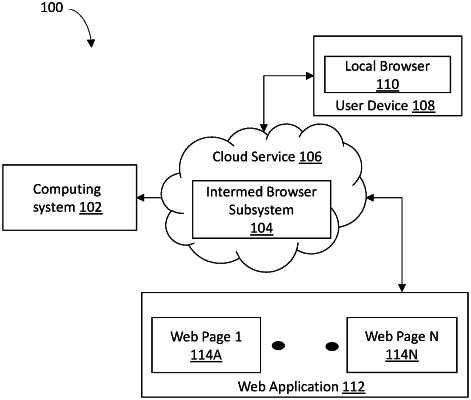| CPC H04L 63/0884 (2013.01) [H04L 63/20 (2013.01)] | 18 Claims |

|
1. A computer-implemented system for managing security credentials of a user in a computing environment, the system comprising:
one or more hardware processors; and
a memory coupled to the one or more hardware processors, wherein the memory comprises an intermediate web browser subsystem in the form of programmable instructions executable by the one or more hardware processors, wherein the intermediate web browser subsystem comprises:
a communication subsystem configured for establishing a connection with a local web browser hosted on a user device using a communication channel;
a request handler subsystem configured for receiving a request for accessing a web application on the local web browser hosted on the user device from a user;
a web page handler subsystem configured for determining whether current web page associated with the requested web application on the local web browser requires authentication of the user;
a password policy handler subsystem configured for determining a password policy associated with the requested web application if the current web page associated with the requested web application requires authentication of the user, wherein the password policy corresponds to a set of rules governing a password scheme or a standard set forth by the web application;
an authentication subsystem configured for authenticating the user on the current web page using pre-stored user credentials based on the determined password policy, wherein the authentication subsystem is configured for:
determining network address associated with the user device based on the received request;
determining type of the requested web application based on the received request:
identifying user credentials of the user stored in a database based on the determined type of requested web application; and
authenticating the user on the current page of the request web application using the identified user credentials of the user;
a routing subsystem configured for routing the current web page of the local web browser to the requested web application via the intermediate web browser subsystem upon successful authentication of the user; and
an access management subsystem configured for providing access of the web application to the local web browser hosted on the user device based on one or more access privileges associated with the user.
|